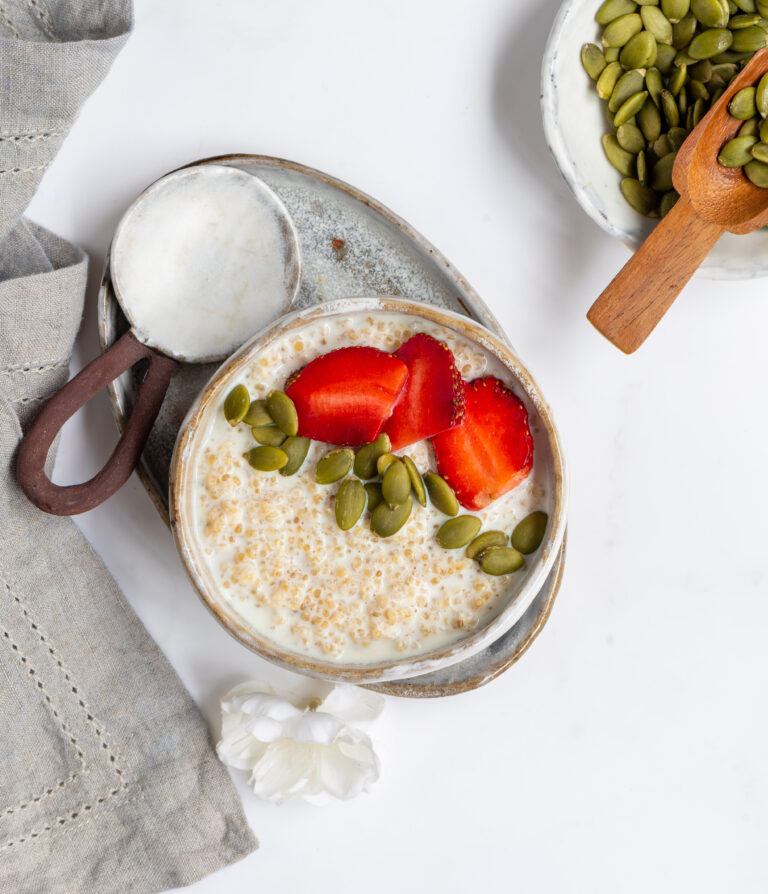Happy new year! Now that the festivities are over, this is usually the time when everyone decides to start eating more nutritiously and to set goals for ourselves in terms of fitness. With that in mind, I too chose to bring some healthy recipes into the picture, after a spree of indulgent ones. Hence, this quinoa porridge to kickstart the year.
You may know that I love my overnight oats as a breakfast dish, but oats contain a lot of carbs, as they are a grain. Many of you also know that cutting down on carbs has been one of my own big ongoing goals, as I’ve shared umpteen times. The use of quinoa as an alternative is something I wanted to explore.
Quinoa is also one of those trendy ingredients at this time, and I know that other people are just as keen to explore new ways to bring it into their diets. This is because it is packed with antioxidants, fibre, protein and other nutrients and is great for those who eat gluten-free. This dish is a simple and delicious way to consume more of it.

The beauty of a porridge is that it can be made with any grain or grain substitute. In South India, we have numerous varieties that use millets, such as ragi kanji. My mother-in-law would make some from Gujarati cuisine too, like bajra ghensh. The concept is traditional in many cuisines.
You can also dress up a porridge any way you want. For instance, you could prepare this quinoa porridge as a savoury dish – with dollops of Greek yoghurt, cumin powder and salt. However, I am sharing the sweet version today. I use cinnamon, either honey or maple syrup, and top it up with fruits and nuts for added flavour and a protein boost.
I love the fact that porridge can be used as a base and then built up any way you want. All options seem to work with the base. It’s such a great way to start the day, and indeed the year too.
Of course, my favourite porridge will always be the one I have whenever I visit my friend in Singapore. It’s a delicious local congee with rice, starch and other additions like onion, chicken, shrimp and so on. I don’t have the recipe for that, but I hope to learn it some day. Or maybe you know how to make it, and can share it with me?

Quinoa Porridge
(Yield: Serves 1)
Porridge
½ cup quinoa
½ cup water
1 cup milk of your choice
1 teaspoon honey/maple syrup
Topping
1 teaspoon seeds of your choice
Fruit of your choice
1 pinch cinnamon powder
In a saucepan, add the quinoa, water and part of the milk. Allow to boil. Once the quinoa is cooked and fluffy, add the remaining milk along with the honey or maple syrup. You can add or reduce the milk quantity to your taste.
Put the cooked quinoa into a bowl and top it up with fruit and seeds of your choice, and a sprinkling of cinnamon powder. Enjoy this delicious start to your day, knowing that it is full of nourishing goodness!








